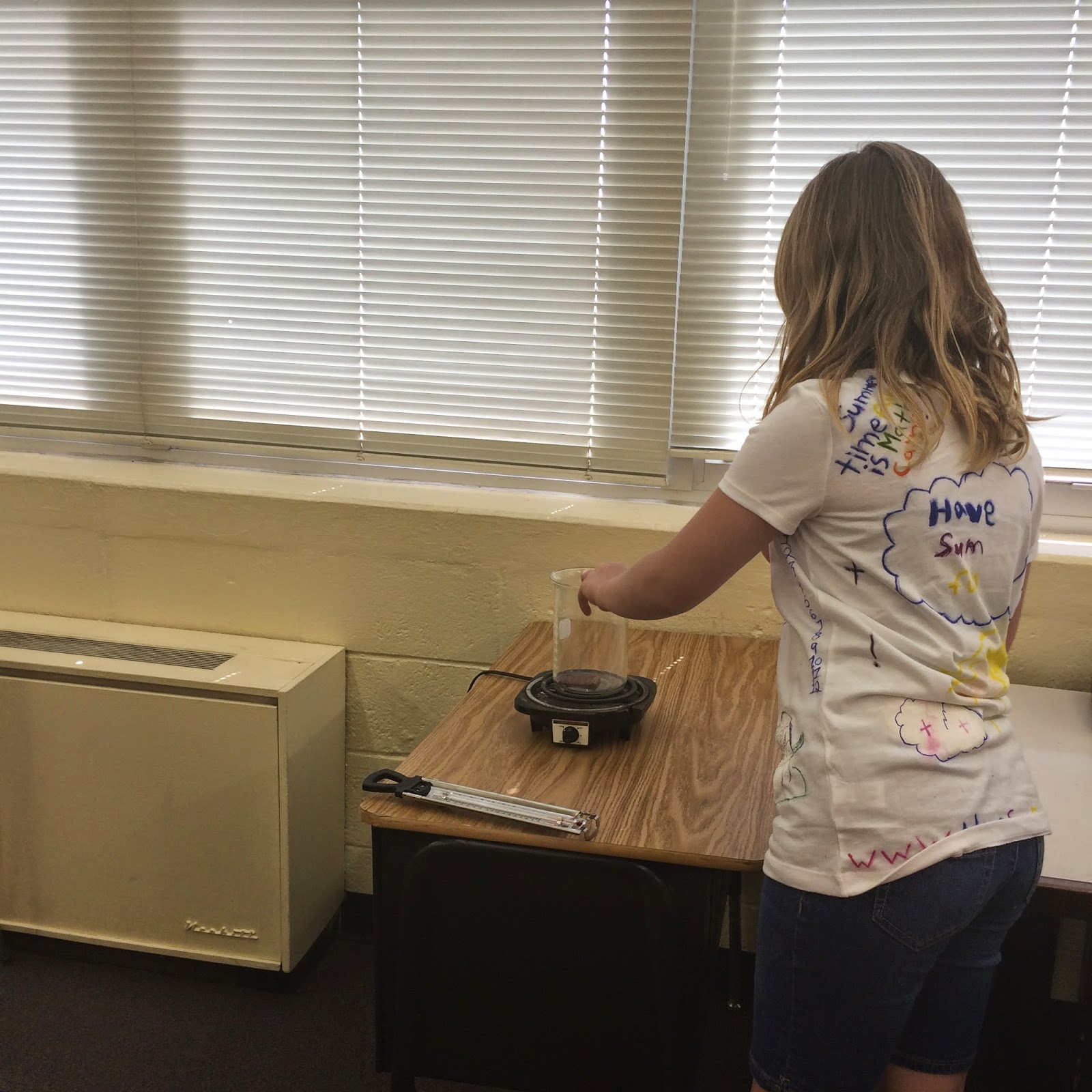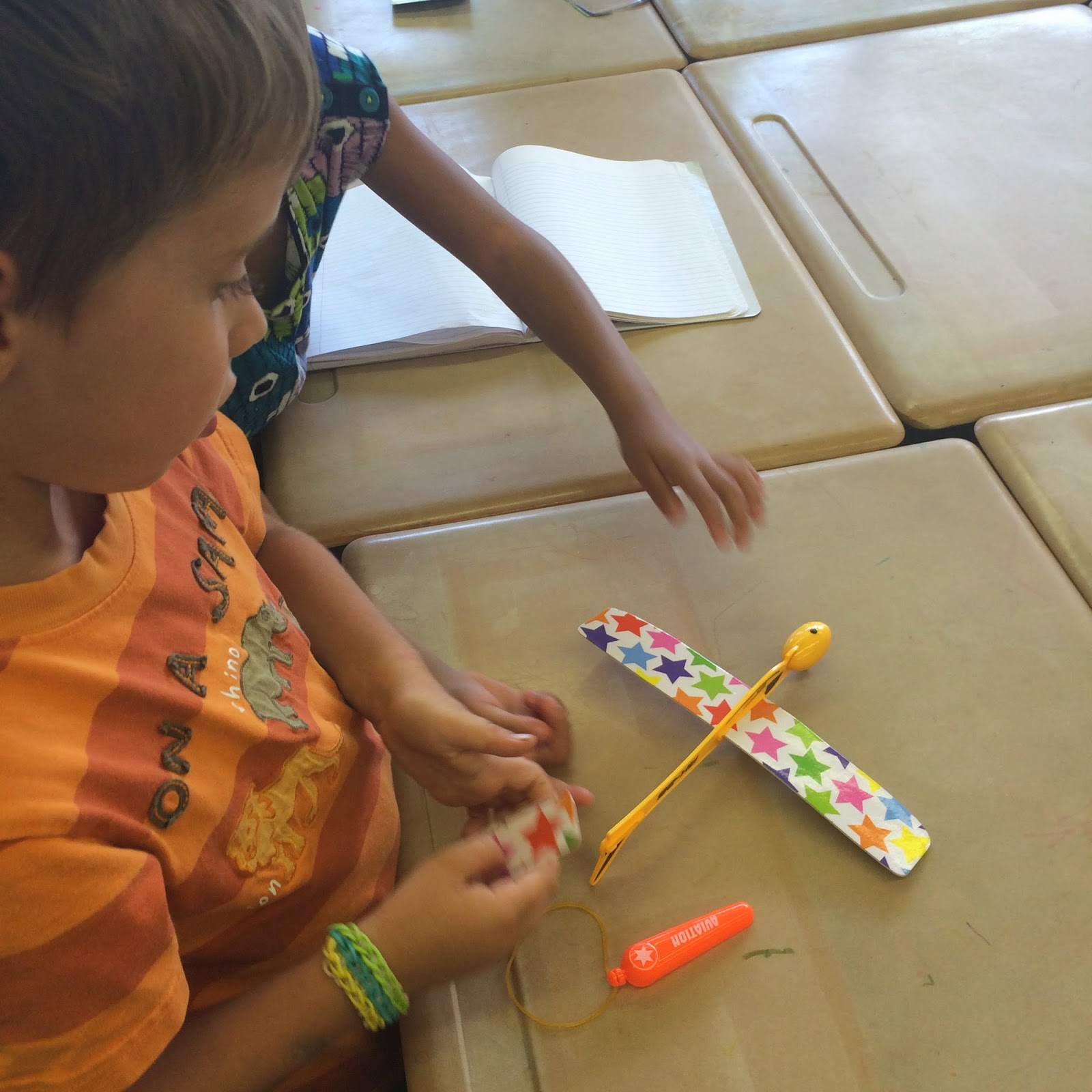After four days of learning how chemistry happens in the kitchen the young chemists had the opportunity to showcase an experiment of their own. Each team had the opportunity to present to the rest of the group what their experiment involved. Teams had to present materials and procedures for the experiment and then had to demonstrate how the experiment could be conducted. These young women and men not only did a fantastic job demonstrating the experiment, as an audience they gave their colleagues undivided attention. All wrote down in their journals the materials and procedures for each of the experiments showcased. Because we had been practicing writing lab reports all week, it was second nature for theses scientists to proceed using these skills throughout the demos. Now they can replicate each experiment at home in their own kitchens, even changing the variables for other possible results. I am very proud of all them! Well done everyone!
Setting up!
Getting ready for demos!
We are almost ready!
Presenting materials and procedures for making a lava lamp.
Materials and procedures for creating a balloon "bomb" using apple vinegar and sodium bicarbonate, a.k.a baking soda.
Precision in measurements (sneaking math in!) is crucial in making "Blueberry Surprise"
Writing down materials for a demonstration of what temperature chocolate melts the fastest.
Writing down materials and procedures of what happens when milk, food coloring, and liquid dish soap mix.
Let the demonstrations begin!
Let the demonstrations begin!
Let the demonstrations begin!
Let the demonstrations begin!
Let the demonstrations begin!
Let the demonstrations begin!
Let the demonstrations begin!
THE OUTCOMES AND RESULTS!
Can you see the flying bottle and purple balloon?
Mr. Justin testing out the geyser, boy did he confirm the experiment works!
YOUNGER GROUP: MORE ON BIRD ADAPTATIONS!
The younger group spent the day reviewing and recapping on what an adaptation is. To do so they conducted an experiment in which airplane wings were compared between two types of planes. We then had a discussion on what types of birds have short wings and long wings and why that would make a difference. We then compared the beaks of those birds that have short wings with those that have long wings, is there a pattern? Indeed these young scientists discovered the pattern! And what fun was had while conducting the experiment!
Making the planes.
Making the planes.
Making the planes.
Making the planes.
Making the planes.
Making the planes.
Getting ready to test out the short-winged planes.
Testing the planes outside, which one flew the longest? Which one stayed in the air the longest? Which one went the longest distance?
Testing the planes outside, which one flew the longest? Which one stayed in the air the longest? Which one went the longest distance?
In the afternoon young campers discussed worms by blowing up huge "worm" balloons, what is it about their shape that helps them survive in their environment?
Big worm!
Worms galore!
THE END OF A GREAT WEEK!
Thank you for lending me your children for the past week(s), I have truly enjoyed getting to know them and have had a great time doing science with them! Please continue to foster their spirit of curiosity for the natural world and have them use their journals to continue to record their observations. Have a great rest of your summer young scientists, till next summer!!
A SPECIAL THANKS GOES OUT TO MY AMAZING STAFF WHO WERE MY RIGHT HAND AT EVERY STEP OF THIS CAMP SO KUDOS TO MR. JUSTIN, MISS EMILIE, AND MISS JESSE! YOU ROCK AND ARE AMAZING SCIENTISTS!!!!
































.jpg)


.jpg)






















